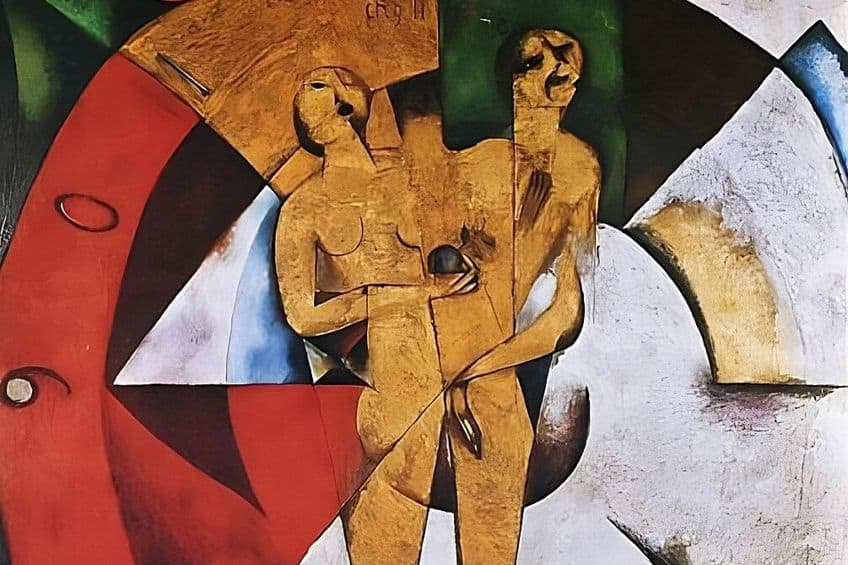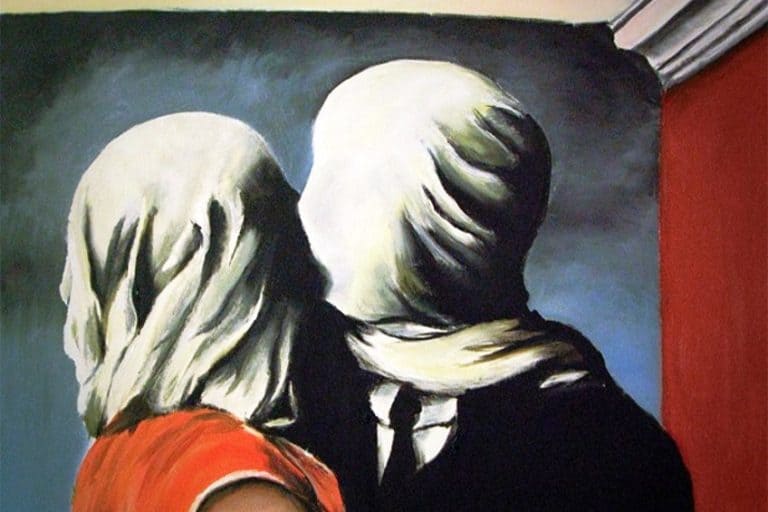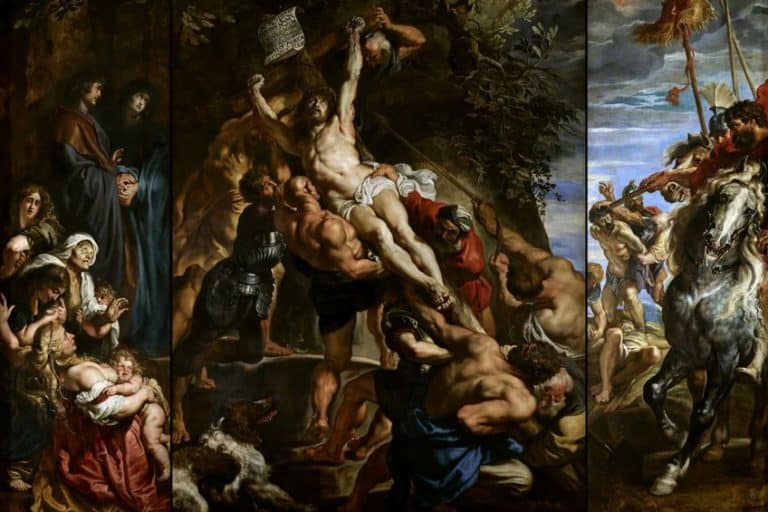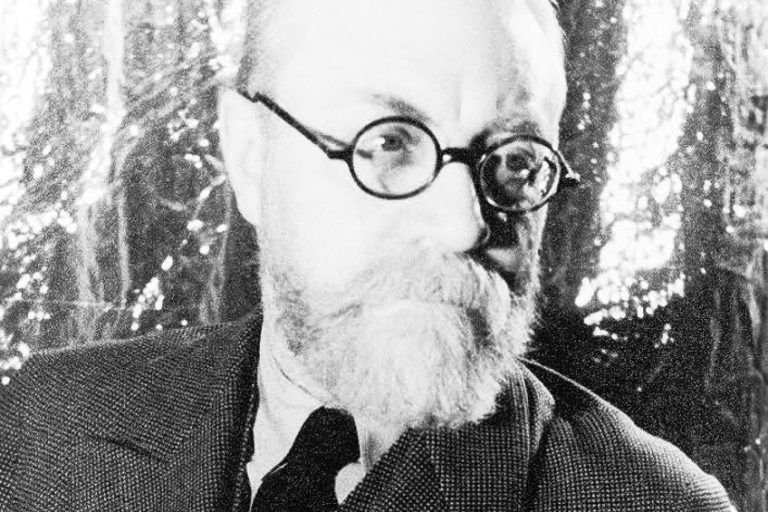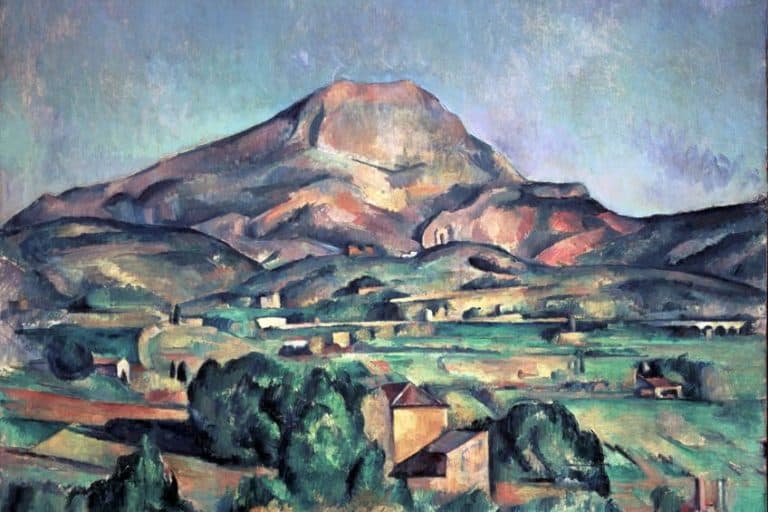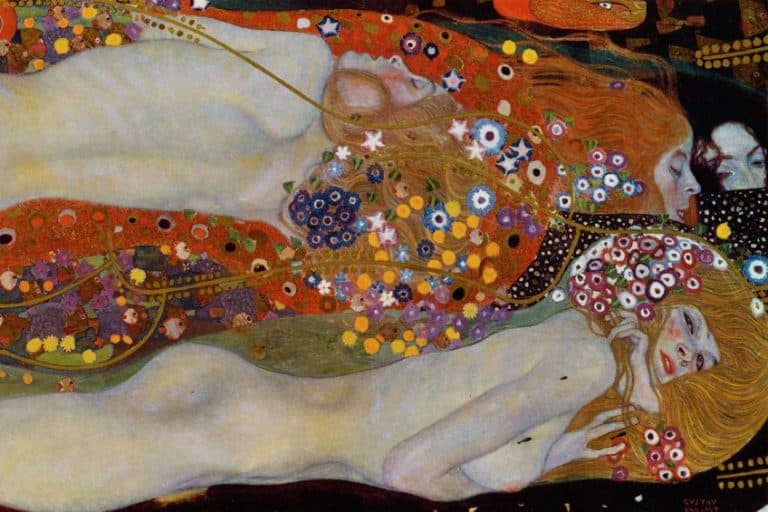Famous Ugly Paintings – Art That Proves Beauty Is Not Everything
In art, what makes a painting beautiful or criticized as “ugly”? There are many reasons why some favor the picturesque landscape over the muddy-looking terrain, and most of it can be attributed to our understanding of what is considered visually pleasing. The contentious subject of aesthetics was also heavily founded on the idealistic and preset standards of the Western gaze, and most prominently, aided by the male gaze, which influenced broader understandings of what was considered ugly or aesthetically displeasing. In this article, we will uncover 12 famous ugly paintings that have been labeled as such due to their unique visual qualities that have also brought them much recognition. Keep reading to uncover what these paintings look like and more!
Creating “Ugly” Art: A Path to Fame
What is considered ugly? One must evaluate one’s notion of beauty, or standards for aesthetics when reviewing the question of ugliness in art. Traditionally, what has been considered ugly was also regarded as unconventional, visually incoherent, confusing, and sometimes too abstract.
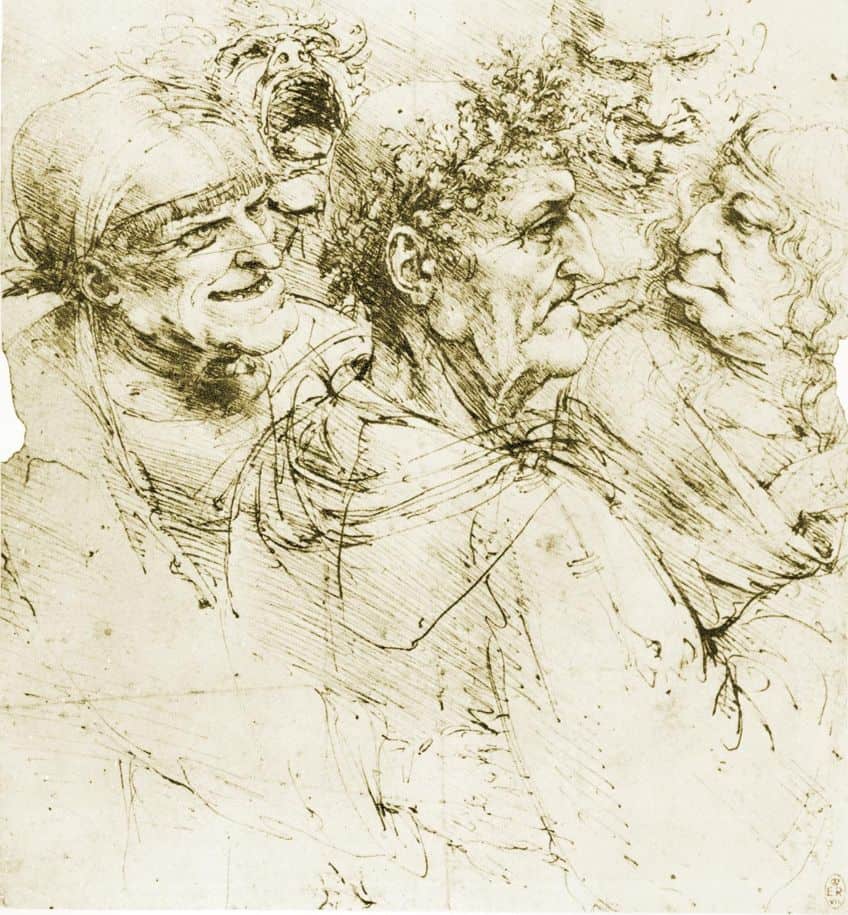
Ugly paintings have also been deemed as such for displaying models and figures that were seen as unattractive, presented in crude ways, and sometimes blurring the lines between what people knew and what they imagined. It is fair to say that most “ugly” paintings, including the ones discussed below, all possessed a certain shock factor to their audience that might make you feel confused when considering the strict codes imposed on artists back in the day.
In many ways, what was once ugly had also boosted the fame of the paintings once labeled as such, leading to more recognition and contemplation over the concepts of beauty, attractiveness, ugliness, the grotesque, and the uncanny.
12 Famous Ugly Paintings You Must See
From Leonardo da Vinci to Jana Euler, these 12 famous ugly paintings will have you questioning the intent, and perhaps genius of the artists who made them. Below, you will find a list of some of the most famous ugly paintings that many can agree with, certainly challenging notions of what a beautiful and appealing painting looks like. Perhaps, they are so ugly that they cannot help but highlight some form of beauty.
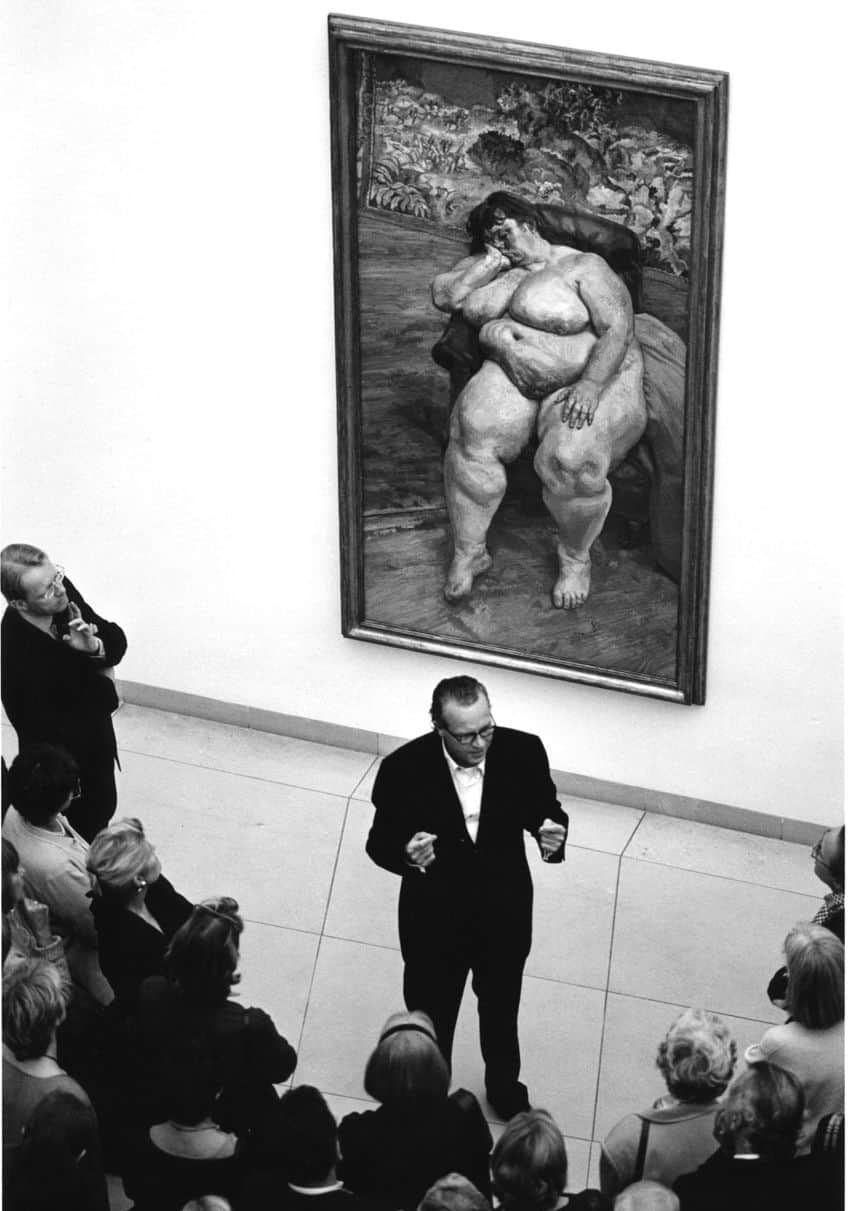
The Ugly Duchess (1513) by Quentin Matsys
| Artist Name | Quentin Matsys (1466 – 1530) |
| Date | 1513 |
| Medium | Oil on oak panel |
| Dimensions (cm) | 62.4 x 45.5 |
| Where It Is Housed | The National Gallery, London, United Kingdom |
Also known as A Grotesque Old Woman, The Ugly Duchess is a famous ugly painting that was created as a satirical portrait by Quentin Matsys in 1513. The Flemish painter created this unusual portrait to portray an older woman with all the features of old age. He painted her with a horned headdress, which was then considered unfashionable, and held a red flower in her hand, which was a motif used to indicate engagement. The portrait suggests that the elderly woman, who is clearly past her prime, is still attempting to attract a suitor.
The Ugly Duchess was also thought to have been inspired by a previous caricature by Leonardo da Vinci, however, it was revealed that the work was originally that of Matsys’.

The Beggars (1568) by Pieter Bruegel the Elder
| Artist Name | Pieter Bruegel the Elder (c. 1525 – 1569) |
| Date | 1568 |
| Medium | Oil on panel |
| Dimensions (cm) | 18.5 x 21.5 |
| Where It Is Housed | Louvre, Paris, France |
The Beggars by Pieter Bruegel the Elder is considered to be among the most unpleasant paintings of the 16th century, largely due to the depiction of five beggars, who are said to represent a historical event. The image draws reference to a rebel group that united against the leadership of Philip II of Spain and Granvelle. The figures are also dressed in unusual attire such as carnival gear to represent the different classes in the society, from a king represented by a cardboard crown to a miter representing the bishop. The painting may be misunderstood as a study of beggars; however, the composition is entirely satirical and intended to symbolize the disease of moral decrepitude that can attack anyone, regardless of their class. At the time, many Europeans did not pay attention to those who were less fortunate and as a result, ignored their pleas.
The painting was gifted to the Louvre in 1892 and is recognized as the only Bruegel painting at the museum.
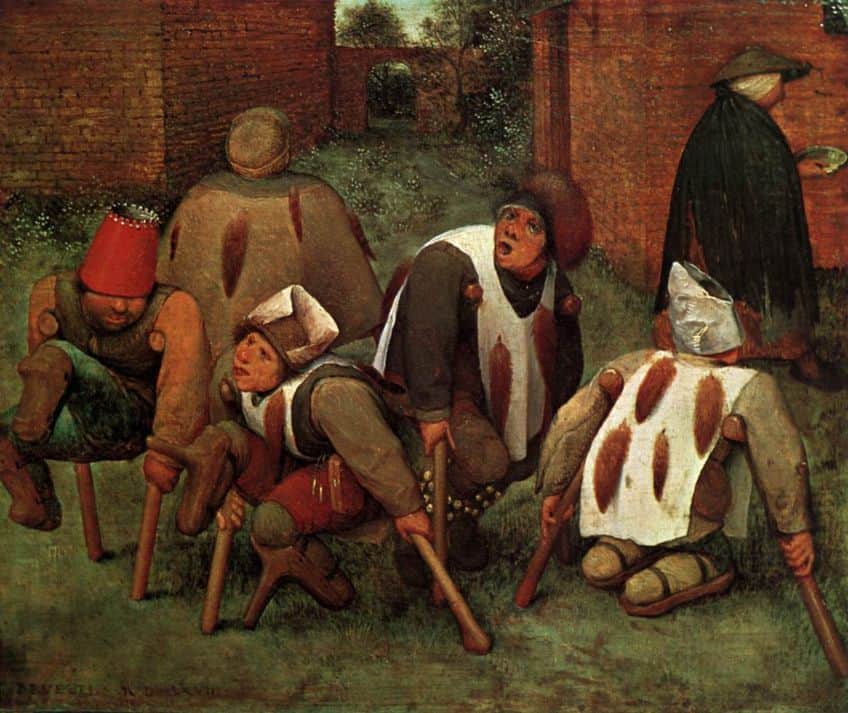
Vertumnus (1591) by Giuseppe Arcimboldo
| Artist Name | Giuseppe Arcimboldo (1526 – 1593) |
| Date | 1591 |
| Medium | Oil on canvas |
| Dimensions (cm) | 70 x 58 |
| Where It Is Housed | Skokloster Castle, Håbo Municipality, Sweden |
Vertumnus is among the most renowned ugly paintings of the 16th century that was created by Giuseppe Arcimboldo in 1591. The famous portrait represents the Holy Roman Emperor Rudolf II, depicted in an arrangement of flowers, fruits, and vegetables. Perhaps what made this painting appear “ugly” was Arcimboldo’s choice to represent such a figure using fruits and vegetables. This was not only a reference to the Roman God Vertumnus but also made the painting appear particularly strange and simply unappealing to 16th-century viewers. Although the painting is a humorous representation of the Emperor, the portrait also holds intentional political associations.
After the portrait was presented to the Emperor, it was moved under the ownership of the Swedish army and disappeared in the history record for a while until it resurfaced at Skokloster Castle in 1845, where it remains today.
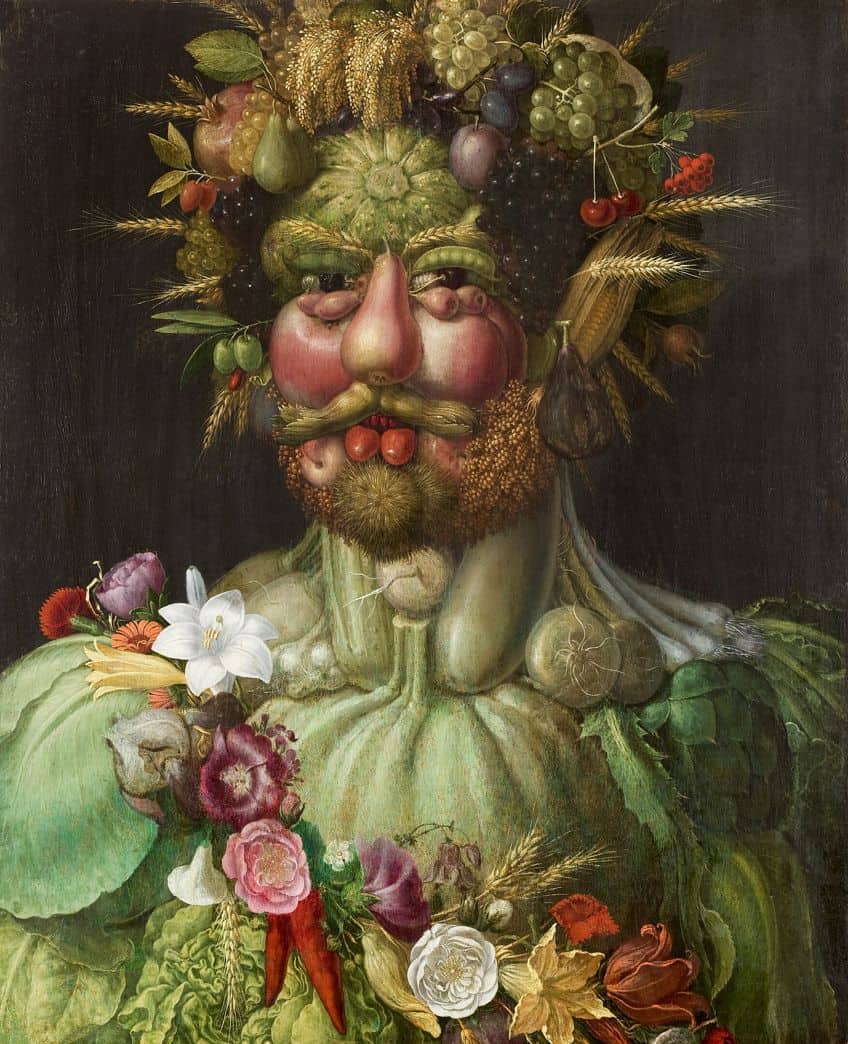
Magdalena Ventura with Her Husband and Son (1631) by Jusepe de Ribera
| Artist Name | Jusepe de Ribera (1591 – 1652) |
| Date | 1631 |
| Medium | Oil on canvas |
| Dimensions (cm) | 212 x 144 |
| Where It Is Housed | Museo Nacional del Prado, Madrid, Spain |
Magdalena Ventura with Her Husband and Son easily fell into the category of “ugly” during its time largely because it depicted an unconventional woman named Magdalena Ventura, who suffered from a hormonal disorder. The group portrait captures Ventura as nursing her baby while her husband lurks in the shadows. On the right of the composition are two steeles, which detail the family’s story and in Latin as A Wonder in Nature, while the second describes Ventura’s “unusual” appearance. According to accounts, Ventura was 52 years of age and had begun experiencing increased facial hair growth at the age of 37. Apart from her unconventional appearance for her time, the painting depicted her character as dutiful and proud of her appearance, regardless of what society thought of her condition. The creator of this famous painting, Jusepe de Ribera, also represented Ventura in a nontraditional pose that was associated with the representation of African women nursing their children in similar ways.
While the painting emphasizes Ventura’s masculinity, it also depicts the aspect of her character as embedded with strength and pride in her unique qualities.
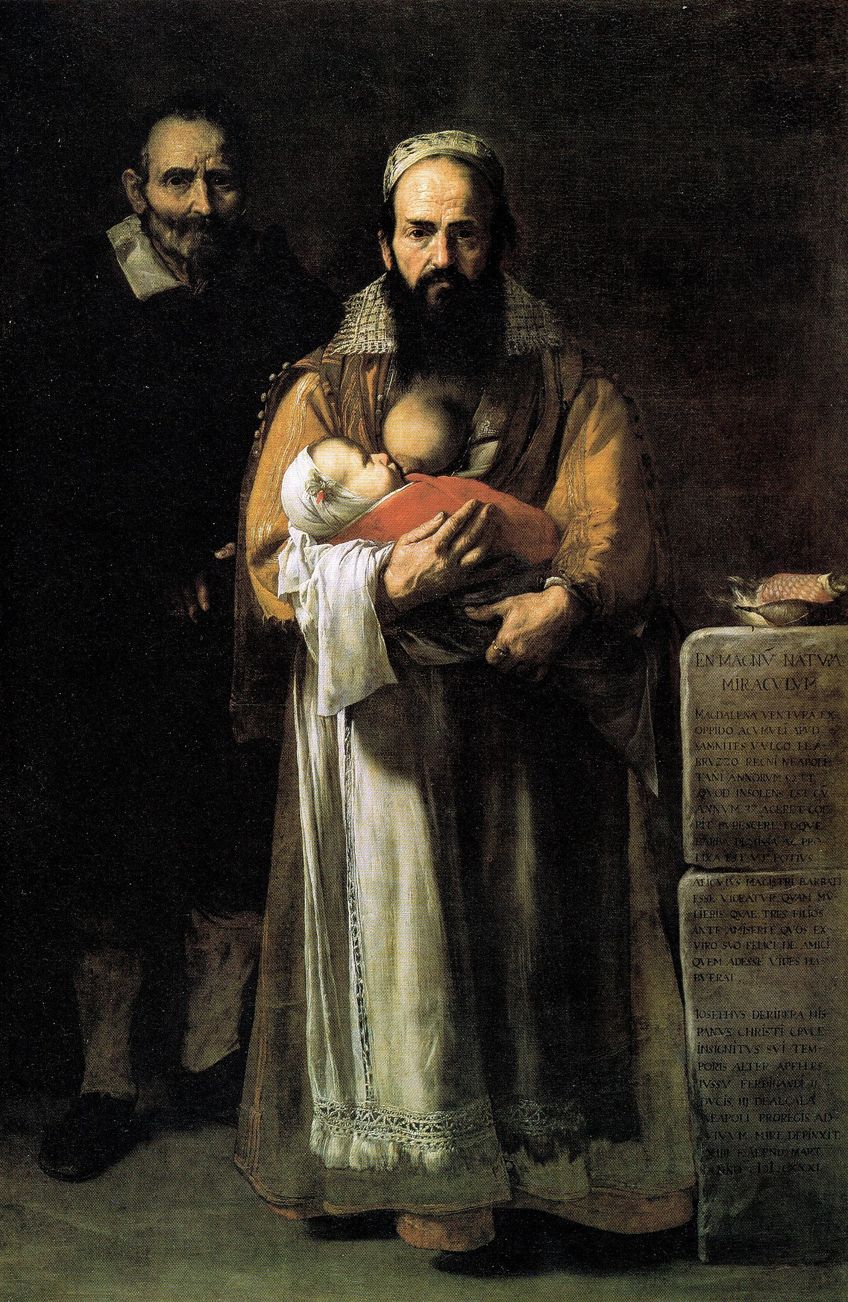
Saturn Devouring His Son (1819 – 1823) by Francisco Goya
| Artist Name | Francisco José de Goya y Lucientes (1746 – 1828) |
| Date | 1819 – 1823 |
| Medium | Mixed media mural transferred to canvas |
| Dimensions (cm) | 143.5 x 81.4 |
| Where It Is Housed | Museo del Prado, Madrid, Spain |
Saturn Devouring His Son is among the most renowned paintings by the Spanish painter Francisco Goya, whose grotesque depiction of the Greek mythological figure Cronus is portrayed munching on his son. The painting is psychologically shocking, which contributes to its “ugly” factor as an artwork that neither brings joy nor would leave one with much of an appetite should it be hung on your wall. This is also an interesting feature of paintings that are regarded as “ugly” since it is mostly the shock factor of images that we are not used to seeing and its unfamiliarity with the reality that makes us want to look away, and thus label images as “ugly”. Goya’s painting was part of his Black Paintings series he created on the walls of his residence in the 1820s and was transferred to canvases when he died.
The paintings remained closed to the public eye until they were transferred onto canvases by Salvador Martinez Cubells but were subject to damage in the process. Baron Émile d´Erlanger, who acquired Goya’s home, donated the works to the state, where they were then assigned to the Prado Museum.
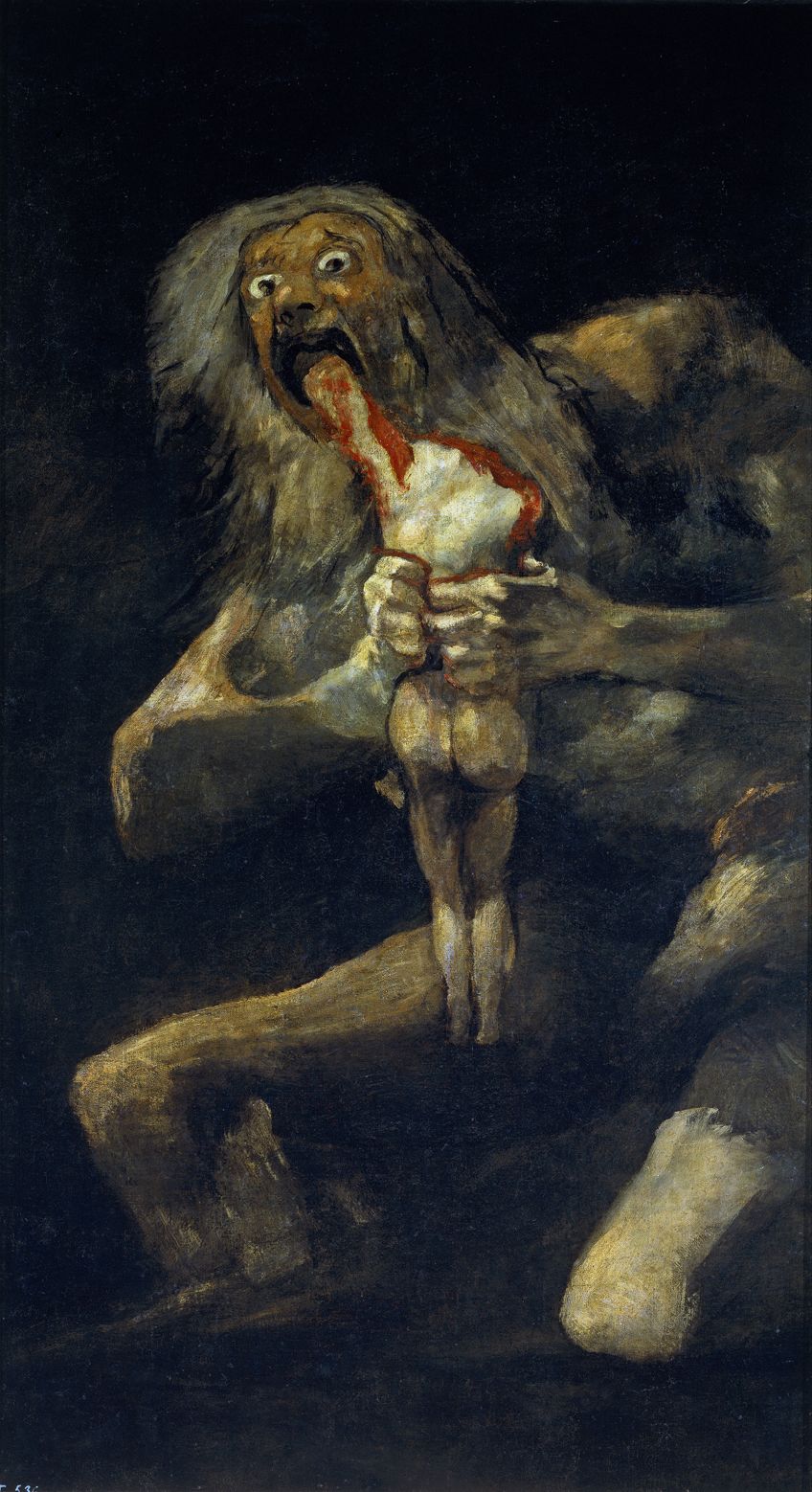
Homage to Apollinaire (1911 – 1912) by Marc Chagall
| Artist Name | Marc Chagall (1887 – 1985) |
| Date | 1911 – 1912 |
| Medium | Oil on canvas |
| Dimensions (cm) | 200 x 189.9 |
| Where It Is Housed | Van Abbemuseum, Eindhoven, the Netherlands |
Homage to Apollinaire is an early 20th-century painting by Marc Chagall, who was widely known for his experimental paintings and forms. Yet, this painting presents an unusual approach to paying tribute to a friend. One might assume that your friend might create a portrait of you should you die, but Chagall had other ideas. The painting was titled after his friend and art critic Guillaume Apollinaire, who was a famous French playwright and poet. Apollinaire was also a favored member of the Montparnasse artist community and was known for his enthusiastic nature toward new movements. He was also credited with coining the word “surrealist”, which was quickly adopted by the likes of Andre Breton.
Apollinaire’s end arrived when he enlisted in the war in 1914 and suffered an injury to the head in 1916.
His death followed in 1918 after succumbing to the Spanish flu. Chagall’s eclectic painting is complex in its appearance and may not please all eyes since it is associated with “ugly” paintings. The work depicts a figure of a man and woman fused awkwardly at the hip and appears wrapped in a vortex that also spews out fragments of color and geometric shapes. The root of what makes this painting seem unappealing is its unique complexity and ability to evoke confusion in the viewer to the point where one does not understand what it is they are looking at. Another similar study that reflects Chagall’s use of Primitive art styles as seen in this work was also Homage à Apollinaire ou Adam et Ève (1911 – 1912).
The Red Egg (c. 1940 – 1941) by Oskar Kokoschka
| Artist Name | Oskar Kokoschka (1886 – 1980) |
| Date | c. 1940 – 1941 |
| Medium | Oil on canvas |
| Dimensions (cm) | 61 x 76 |
| Where It Is Housed | The National Gallery Prague, Prague, Czechia |
This striking arrangement is certainly not aesthetically pleasing to the modern gaze nor does it portray figures you would hope to wake up to every morning. Painted sometime between 1940 and 1941, The Red Egg is widely regarded as one of the world’s most famous ugly paintings that was created by Oskar Kokoschka. The work is powered by satire, which some may not initially realize since it features the caricatures of tyrants like Adolf Hitler painted in a blurry yet distinguishable manner on the top left. The painting is said to represent the 1939 destruction of Czechoslovakia, shortly after the Munich Agreement.
One can also spot a rat, which appears to have just exited Hitler’s mouth.
No. 5 (1948) by Jackson Pollock
| Artist Name | Jackson Pollock (1912 – 1956) |
| Date | 1948 |
| Medium | Oil on fiberboard |
| Dimensions (cm) | 244 x 122 |
| Where It Is Housed | Private collection in New York City, United States |
One cannot discuss “ugly” paintings without acknowledging the possibility that perhaps too much abstraction could make a painting unappealing to the eye. Jackson Pollock makes this list with his No. 5 painting, created in 1948, which was recognized as one of the most famous ugly paintings. This was due to its condensed and busy composition that may not appeal to every modern eye. In 2006, No. 5 sold for around $140 million, which shocked many people since one would not expect to purchase such a painting for such a high price, given that it was nonrepresentational. Pollock incorporated synthetic resin paints to produce a bird’s nest-like composition, with scattered colors of yellow, brown, gray, and white. The painting also had to be modified by the artist after it faced some damage and the person who purchased the painting, Alfonso Osorio, agreed to have Pollock rework the painting.
In the end, the buyer was content with the second version, claiming that it retained its initial concept of linear depth.
Woman III (1953) by Willem de Kooning
| Artist Name | Willem de Kooning (1904- 1997) |
| Date | 1953 |
| Medium | Oil on canvas |
| Dimensions (cm) | 172.7 x 123.2 |
| Where It Is Housed | Private collection of Steven A. Cohen |
Woman III is a renowned mid-20th century painting by Willem de Kooning that is identified as an “ugly” painting for its representation of an extremely abstract figure of a woman. The painting was created in 1953 and debuted at Sidney Janis Gallery in the same year. Apart from the distorted and unrealistic figure, the palette of the work is just as muted and questionable as the composition. The color palette spans a variety of whites, grays, and flat areas of color, which as a product of abstract expressionism, seemed acceptable. However, the work’s non-traditional style and unusual representation seemed to boost its recognition after it was sold in 2006 to Steven Cohen for $137.5 million.
Willem de Kooning helped propel the styles of Abstract Expressionism after the Second World War using action painting at the New York School.
Untitled (New York City) (1968) by Cy Twombly
| Artist Name | Cy Twombly (1928 – 2011) |
| Date | 1968 |
| Medium | Oil-based house paint and wax crayon on canvas |
| Dimensions (cm) | 172.7 x 228.6 |
| Where It Is Housed | Private collection |
Untitled (New York City) presents a series of scribbles that sold for $70.5 million and is perhaps shocking to many since the scribbles appear devoid of any complexity or concept. The painting was created by Cy Twombly, who was working on his series of blackboard paintings in the 1960s and 1970s. One is forced to confront the simplicity of the painting and its perceived value in light of its creator, which may seem ridiculous to some, yet provides a new perspective on what sells in the art market.
Perhaps this is what makes the work seem “ugly” to accept.
Three Studies of Lucian Freud (1969) by Francis Bacon
| Artist Name | Francis Bacon (1909 – 1992) |
| Date | 1969 |
| Medium | Oil on canvas |
| Dimensions (cm) | 198 x 147.5 |
| Where It Is Housed | Private collection |
Three Studies of Lucian Freud is surprisingly also on the list of one of the most famous ugly paintings that was created in 1969 by Francis Bacon. In 2013, the famous painting sold for $142.4 million, which made it the highest auction-sold artwork at the time. Francis Bacon’s subject was Lucian Freud and it is known that the two modeled for each other on at least several occasions since 1951. If one knows the subject matter and visual aesthetic of Francis Bacon, then one also identifies his work with feelings of uncanny and terror through figurative distortion. His works incorporate a strange balance of appealing to things that are both recognizable yet terrifying at the same time. Three Studies of Lucian Freud was created on three panels in an isolated, abstract style that distorted the figure of Lucian Freud, who appears seated on a wooden chair, within a cage. Packed with a sense of “emotional exasperation”, the viewer finds themselves at odds with the intensity and irrationality of the piece.
Unfortunately, both artists ended their friendship in the mid-1970s after an argument.
Analysemonster (2014) by Jana Euler
| Artist Name | Jana Euler (1982 – Present) |
| Date | 2014 |
| Medium | Oil on canvas |
| Dimensions (cm) | 47.5 x 187 x 45 |
| Where It Is Housed | Stedelijk Museum Amsterdam, Amsterdam, the Netherlands |
Analysemonster is perhaps the most terrifying painting you might find and certainly, one that has been included on many lists of some of the world’s ugliest paintings. But what makes this painting appear ugly? The large canvas is occupied by a troll-like creature with a red tongue that spills from its mouth and huge saucer-like eyes that immediately scare the viewer instead of intriguing them. Perhaps it is the striking nature of the painting and its use of painterly illusionism, and an unrecognizable form that encourages one to freeze or look away instead of engaging with its visual features. The painting was created by Jana Euler, who is widely known for her shocking compositions that focus on uncanny visuals and evoke discomfort in the viewer.
These 12 famous ugly paintings have much to teach us about what society and the world consider “ugly” art, as well as the key points that one can use to reassess one’s personal views on how ugliness is understood in art. We hope that this article has been informative and will motivate you to explore the possibilities of expanding your understanding of concepts like beauty, aesthetics, and “pretty” art.
Frequently Asked Questions
What Is the Most Famous Ugly Painting?
The Ugly Duchess is recognized as the most famous ugly painting, largely for the way the artist represented an aristocratic lady of the 16th century. The painting was created in 1513 by Quentin Matsys, who also shared his work in caricature with Leonardo da Vinci. The satirical piece is also known as A Grotesque Old Woman.
What Makes Ugly Paintings So Popular?
Paintings that are considered to be ugly by current standards of pleasant artwork usually become popular for their provocative nature, such that they shock the viewer by presenting a sort of truth to cause discomfort. These types of artworks are appreciated for their reactionary value, such that the ugliness of the work can be viewed as impactful and a reflection of human reaction or emotion.
Is Ugly Art a Genre?
Ugly art is not its own genre since any artwork can be identified as subjectively ugly or pleasing to the eye depending on the viewer’s perspective. Artworks that contain a type of provocation or evoke an unpleasant reaction may be considered ugly in the lens of those who appreciate more traditional academic art styles.
Jordan Anthony is a film photographer, curator, and arts writer based in Cape Town, South Africa. Anthony schooled in Durban and graduated from the University of the Witwatersrand, Johannesburg, with a Bachelor of Art in Fine Arts. During her studies, she explored additional electives in archaeology and psychology, while focusing on themes such as healing, identity, dreams, and intuitive creation in her Contemporary art practice. She has since worked and collaborated with various professionals in the local art industry, including the KZNSA Gallery in Durban (with Strauss & Co.), Turbine Art Fair (via overheard in the gallery), and the Wits Art Museum.
Anthony’s interests include subjects and themes related to philosophy, memory, and esotericism. Her personal photography archive traces her exploration of film through abstract manipulations of color, portraiture, candid photography, and urban landscapes. Her favorite art movements include Surrealism and Fluxus, as well as art produced by ancient civilizations. Anthony’s earliest encounters with art began in childhood with a book on Salvador Dalí and imagery from old recipe books, medical books, and religious literature. She also enjoys the allure of found objects, brown noise, and constellations.
Learn more about Jordan Anthony and the Art in Context Team.
Cite this Article
Jordan, Anthony, “Famous Ugly Paintings – Art That Proves Beauty Is Not Everything.” Art in Context. February 4, 2024. URL: https://artincontext.org/famous-ugly-paintings/
Anthony, J. (2024, 4 February). Famous Ugly Paintings – Art That Proves Beauty Is Not Everything. Art in Context. https://artincontext.org/famous-ugly-paintings/
Anthony, Jordan. “Famous Ugly Paintings – Art That Proves Beauty Is Not Everything.” Art in Context, February 4, 2024. https://artincontext.org/famous-ugly-paintings/.


